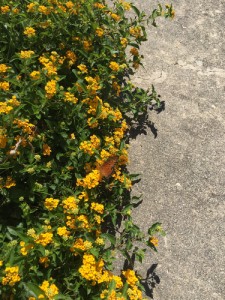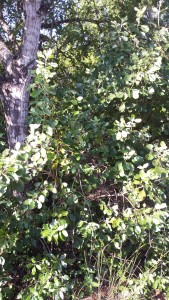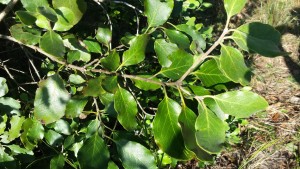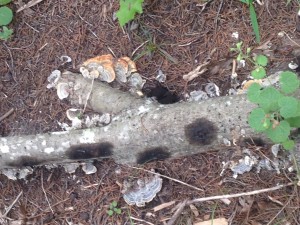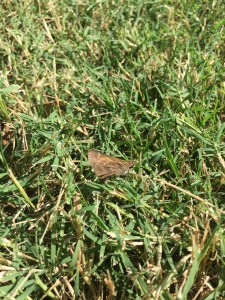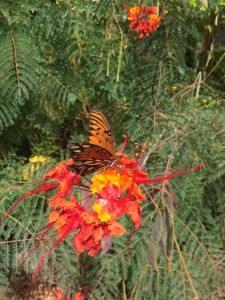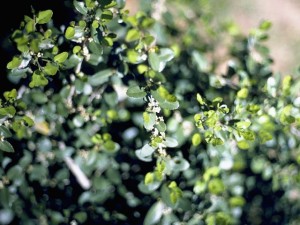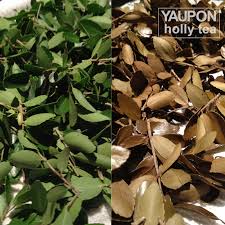This Gulf Fritillary, or Agraulis vanillae, was fluttering around these colorful goldenrods outside my church this morning. The Gulf Fritillary is a brightly colored butterfly common across extreme southern portions of the United States. At home in most open, sunny habitats, it frequents roadsides, disturbed sites, fields, open woodlands, pastures, yards, and parks. It is a regular in most butterfly gardens, including those in more urban settings.
They are commonly mistaken for their famous distant cousins, the Monarch butterfly, due to their coloring and patterns. Although they do not make the Monarch’s incredible journey all the way to Mexico,they are widely spread across the South. Sadly, some species of fritillaries are considered endangered.
You can find my iNaturalist observation here: http://www.inaturalist.org/observations/4370141
